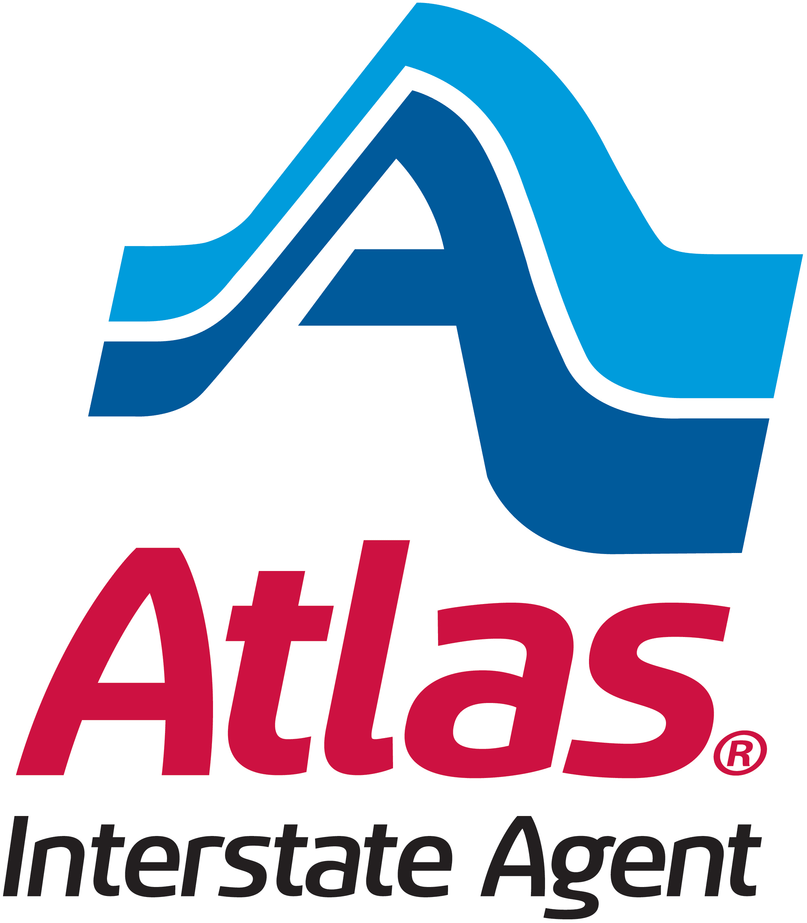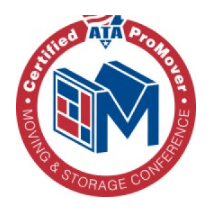U-Haul Moving Truck Price: Sizes, Rates & Hidden Fees

Moving costs can make or break your relocation budget. With U-Haul truck rental prices ranging from $19.95 for local moves to over $2,000 for cross-country trips, understanding the real cost of your move becomes critical. Base rates tell only part of the story – factors like truck size, distance, and seasonal timing can dramatically impact your final expenses.
Getting a clear picture of U-Haul’s pricing structure puts you in control of your moving budget. From the basic daily rates and mileage charges to often-overlooked costs like insurance and equipment rentals, each element affects your bottom line.
Seasonal price swings can mean hundreds in savings or unexpected expenses while choosing the right truck size balances comfort with cost-efficiency.
Smart planning starts with insider knowledge of the rental process. Beyond the advertised rates, understanding fuel costs, environmental fees, and potential surcharges helps prevent budget surprises.
Local moves involve different pricing strategies than long-distance relocations, and knowing these differences helps you make informed choices. Armed with practical insights about U-Haul’s complete pricing structure, you’ll be equipped to secure the best rates and avoid common costly pitfalls during your upcoming move.
Base Pricing Structure For U-Haul Trucks
Planning your moving budget starts with a clear understanding of U-Haul’s pricing structure. Moving costs break down into two distinct categories – local and long-distance moves – each with its own pricing model designed to match different moving needs.
Local Move Pricing Model
U-Haul’s local moving pricing follows a day-rate-plus-mileage formula that’s straightforward but requires attention to detail. Understanding local moving rates is essential, as base daily rates range from $20 to $40, varying by truck size.
While these daily rates look attractive, remember to factor in mileage charges of $0.40 to $1.00 per mile – these can significantly impact your total cost.
Key features of local rentals:
- Minimum one-day rental requirement
- Full tank of gas needed upon return
- Flexible rental extensions are available
- Early booking typically secures better rates
Long-Distance Move Pricing Model
For longer journeys, U-Haul switches to a flat-rate system that simplifies one-way trips. When planning long-distance moving, base rates typically start between $200-$400, with each reservation including:
- Pre-determined number of rental days
- Set mileage allowance based on route
- Basic liability coverage
- Price-lock guarantee on confirmed reservations
The flat-rate approach often proves more cost-effective for extended trips, especially when considering the included mileage allowance. For those planning interstate moving, just keep an eye on your actual travel distance – exceeding the allocated miles means additional charges.
State-specific requirements can influence your final cost. While basic liability protection comes standard, cross-country moves might warrant considering enhanced coverage options. Here’s a practical tip: factor in fuel costs separately, as they’re not included in the flat rate and can add up quickly over long distances.
Smart planning considerations:
- Calculate the total distance carefully to avoid overage fees
- Account for potential state-specific charges
- Budget for fuel costs separately
- Consider additional insurance for valuable items
- Book early to secure optimal rates and availability
Remember that U-Haul’s price guarantee locks in your quoted rate upon reservation – giving you one less thing to worry about as you plan your move. This predictability helps create a more accurate moving budget from the start.
Available Truck Sizes And Their Costs
Understanding the costs of renting a moving truck can make all the difference in your moving experience – both for your wallet and for peace of mind. Let’s break down each U-Haul option to help you choose the right moving truck size for your specific situation.
Pickup Trucks And Cargo Vans
Starting at just $19.95 per day plus mileage fees, pickup trucks offer an economical solution for smaller moves. Perfect for that single piece of furniture or quick apartment cleanout. Cargo vans, priced in the same range, add weather protection and work beautifully for studio apartment moves or business deliveries.
10-Foot Truck Pricing And Capacity
Think of the 10-foot truck as your studio apartment specialist. With daily rates of $20-$30 plus mileage, it’s an affordable option that doesn’t sacrifice functionality. This truck comfortably fits:
- A king-size bed
- A loveseat
- 10-15 medium-sized boxes
- Additional small furniture pieces
The best part? It handles much like a regular car, making it ideal for first-time movers.
15-Foot Truck Pricing And Capacity
The 15-foot truck hits the sweet spot for many movers, especially those with one to two-bedroom apartments. Daily rates typically run $30-$40 plus mileage, offering excellent value for its size. Here’s what makes it special:
- Enough room for major appliances
- Space for furniture from multiple rooms
- Better fuel efficiency than larger models
- Easy maneuverability in city streets
20-Foot Truck Pricing And Capacity
Moving a two to three-bedroom home? The 20-foot truck might be your perfect match. At $40-$50 per day plus mileage, it delivers serious bang for your buck. Standard features include:
- A convenient loading ramp
- Multiple tie-down points
- Space for larger furniture pieces
- Room for 15-20 room-sized boxes
26-Foot Truck Pricing And Capacity
Meet the mighty mover – U-Haul’s largest offering starts at $50-$60 daily plus mileage. While it’s the priciest option, it often proves cost-effective by eliminating multiple trips. This truck handles:
- 3-4 bedroom homes
- Large appliances
- Complete furniture sets
- 20+ room-sized boxes
Every truck comes equipped with essential features like gentle-ride suspension and cargo tie-downs. Comfort features and amenities increase with truck size, giving you more options as you scale up. For long-distance moves, while base rates adjust to flat-rate pricing, the proportional cost difference between sizes remains consistent.
Remember to factor in fuel costs – larger trucks naturally consume more gas, but fewer trips might offset the difference. The key is matching your specific needs with the right size to maximize both efficiency and value.
Cost-Impacting Factors
Moving costs can feel like a puzzle, but understanding what drives U-Haul truck prices puts you in control of your moving budget. Let’s break down the key factors that shape your rental costs, along with practical ways to save money on your next move.
Seasonal Price Variations
The moving industry follows clear seasonal patterns that directly impact your wallet. During peak season (May through September), expect to pay 20-30% more than standard rates. Here’s what you need to know:
- Peak pricing hits hardest during holiday weekends and month-ends
- Best deals appear during October through April
- Winter moves often come with significant discounts
- Early spring bookings typically offer better availability and rates
Location-Based Price Differences
Your pickup and drop-off locations create a significant impact on the final price tag. In major cities, base rates typically run higher due to operational costs and steady demand.
Here’s an interesting industry insight: moving from San Francisco to Phoenix might cost substantially less than moving from Phoenix to San Francisco – all because of truck demand patterns and fleet distribution needs.
Fuel Costs And Efficiency
The size of your moving truck directly affects your fuel expenses:
- 10-foot truck: 12 mpg (most fuel-efficient)
- 15-foot truck: 10 mpg
- 20-foot truck: 8-10 mpg
- 26-foot truck: 8 mpg (least fuel-efficient)
Remember: These vehicles run on regular unleaded gasoline, and the “full-to-full” fuel policy means returning the truck with the same fuel level as the pickup to avoid extra charges.
Equipment Availability
Truck availability operates on a simple principle: limited supply drives up prices. Smart planning makes all the difference:
- Book 2-4 weeks ahead for the best rates
- Reserve even earlier during peak season
- Check multiple pickup locations
- Consider flexible pickup dates
Day Of Week Pricing
Strategic timing can lead to significant savings:
- Best rates: Tuesday through Thursday (up to 20% savings)
- Moderate pricing: Monday and Friday
- Premium rates: Saturday and Sunday
- Early morning pickups often offer better availability
By considering these factors together, you’re better equipped to secure competitive rates for your move. While seasonal trends might be fixed, combining mid-week timing with off-season dates could unlock substantial savings. The key lies in planning ahead and staying flexible with your schedule where possible.
Additional Fees And Charges
Planning a U-Haul rental? The base rate is just the starting point. Here’s a practical breakdown of the real costs you’ll encounter during your DIY move.
Insurance Options And Costs
Basic liability coverage comes standard with every U-Haul truck, but that’s rarely enough protection for a stress-free move. Their Safemove package runs $14-$20 daily for local moves, protecting both the truck and your belongings.
For complete peace of mind, Safemove Plus offers up to $1,000,000 in supplemental liability coverage – particularly valuable when moving through busy city streets or highways.
Environmental Fee
Every U-Haul rental includes a mandatory environmental fee of $1-$5. While modest, this non-negotiable charge supports essential environmental compliance and green initiatives. Factor this into your initial calculations, as it applies regardless of your rental duration.
Taxes And Surcharges
Local tax rates typically range from 6% to 10% of your rental cost – and that’s just the beginning. You’ll also encounter:
- Road taxes
- Vehicle licensing recovery fees
- Location-specific charges
These mandatory fees pack a bigger punch on longer rentals and one-way moves, sometimes adding 15-20% to your final bill.
Equipment Rentals
Furniture Pads
Quality furniture pads cost $5-$10 each to rent. While it might seem tempting to skip this expense, replacing a damaged antique dresser or designer sofa could set you back hundreds or even thousands.
Dollies
Smart movers invest in proper equipment:
- Utility dollies: $7-$10
- Furniture dollies: $10-$15
These tools aren’t just convenient – they’re essential for preventing back injuries and making your move significantly more efficient.
Loading Ramps
Standard U-Haul trucks include a basic ramp, but specialty or additional ramps cost $15-$25 daily. For unique loading situations or multiple entry points, this extra expense can be worth every penny.
Hidden Costs of DIY Moving
Fuel Costs Beyond Estimates
U-Haul trucks average 8-12 miles per gallon – and that’s under ideal conditions. Add a full load or mountain roads to the equation, and your fuel costs could easily double initial estimates. A cross-country move might require $300-$500 in fuel alone.
Wear and Tear on Personal Vehicles
Making multiple trips in your personal vehicle? Consider these often-overlooked expenses:
- Additional fuel consumption
- Accelerated tire wear
- Potential maintenance issues
- Increased mileage depreciation
Unexpected Fees
The fine print matters:
- Late returns: $20-$40 per day plus regular rental rates
- Cleaning fees: $25-$50 for trucks returned dirty
- Damage charges: Can range from minor repairs to full replacement costs
Time, Labor, and Stress Factor
The true cost of DIY moving extends beyond your wallet. Consider:
- Lost wages from taking time off work
- Physical exhaustion
- Coordination efforts with helpers
- Potential strain on relationships when asking friends for help
Drawing from decades of moving industry experience at Nelson Westerberg, we’ve seen the real math behind DIY moves. While U-Haul rentals can work well for smaller, local moves, understanding these additional costs helps create a realistic budget – and might even reveal that professional moving services offer better value than initially assumed.
Money-Saving Strategies
Looking to keep more money in your pocket when renting a U-Haul truck? Let’s explore practical strategies that can make a real difference in your moving costs.
Advance Reservation Benefits
Here’s something most people don’t realize: booking your U-Haul truck early can save you 15-20% off standard rates. The sweet spot? Reserve your truck 4-6 weeks before your move date.
This advance planning not only locks in better pricing but also gives you the first pick of truck sizes. Plus, you’ll have the flexibility to adjust your moving date if rates drop – a strategy we’ve seen work especially well during peak season (May through September).
Off-Peak Moving Advantages
Want to slash your moving costs even further? Consider this: mid-week moves (Tuesday through Thursday) typically cost 10-15% less than weekend rentals.
The biggest savings happen during the off-season, from October through April, when both rates and truck availability work in your favor. One crucial tip: steer clear of month-end and month-start dates – that’s when lease turnovers drive prices up and availability down.
Promotional Offers And Discounts
Smart movers know where to find extra savings. U-Haul offers special discounts for military members, students, and AAA members – savings that can really add up.
The company’s website and social media channels regularly feature seasonal promotions worth watching. Some locations even offer reduced rates on one-way moves to help balance their truck inventory between cities.
Fuel Economy Tips
When saving money to move out, fuel costs can take a big bite out of your moving budget. These field-tested strategies help maximize every gallon:
- Keep highway speeds between 55-65 mph – the sweet spot for fuel efficiency
- Drive smoothly: aggressive acceleration and sudden braking can burn up to 30% more fuel
- Balance your load: distribute weight evenly throughout the truck for better handling and fuel economy
- Map smart: choose routes that avoid steep hills and rush-hour traffic whenever possible
Drawing from decades of moving industry experience at Nelson Westerberg, we’ve seen these strategies combine to save customers 20-30% on their total moving costs.
While these U-Haul rental tips can significantly reduce expenses, it’s worth getting a quote for professional moving services. Sometimes, when factoring in time, effort, and potential risks, having experienced movers handle your relocation might prove more cost-effective.
Frequently Asked Questions
- How much is the deposit for renting a U-Haul truck?
Here’s what you need to know about deposits: U-Haul requires a $100 deposit when using a credit card. Keep in mind this amount isn’t set in stone – it can change based on your pickup location and how long you’re planning to rent.
The good news? You’ll get your full deposit back when you return the truck in its original condition and stick to the rental agreement terms.
- Can I get a refund if I return the truck earlier than planned?
For local moves, U-Haul offers prorated refunds when you bring the truck back ahead of schedule. Planning a one-way move? The flat rate stays the same regardless of an early return. Pro tip: reach out to your pickup location right away if you’re thinking of returning early – they’ll walk you through any specific requirements for your situation.
- Are there extra charges for additional drivers?
Adding another driver won’t cost you extra with U-Haul – that’s the straightforward answer. Just remember these key requirements: every driver needs to show up at pickup, be at least 18 years old, present a valid driver’s license, and get listed on the rental contract. This ensures everyone’s covered under the insurance policy.
- What happens if I exceed the mileage estimate?
Going over your estimated mileage triggers additional charges ranging from $0.40 to $1.00 per extra mile. The exact rate depends on your location and the size of the truck you’re renting. Want to avoid surprise fees? Take a few minutes to map out your route beforehand and provide an accurate mileage estimate during booking.
- Do I need to fill up the gas tank before returning?
The fuel policy is crystal clear: return the truck with the same fuel level you started with – typically a full tank.
Skip the refill, and you’ll face a refueling fee plus service charges that run significantly higher than regular gas station prices. Smart move: hold onto your fuel receipt as proof of refueling. It’s a simple step that can save you from unnecessary charges.
Conclusion
Let’s break down the real costs of U-Haul truck rentals – because there’s more to it than just the sticker price. While U-Haul advertises competitive base rates, your final cost typically includes several key components:
- Base rental rate
-
- Fuel expenses (trucks average 8-12 MPG)
- Insurance coverage
-
- Equipment rentals (dollies, furniture pads)
- Environmental fees
- Taxes and surcharges
Here’s what experienced movers know: timing makes a huge difference in your bottom line. Moving mid-week or during off-peak months (October-April) can save you 20-30% on base rates. Plus, choosing the right truck size the first time prevents costly upgrades or multiple trips – a 26-foot truck might cost more upfront but saves money when moving a 3-bedroom home.
Smart planning translates directly to real savings. Consider these practical money-saving strategies:
- Reserve your truck 2-3 weeks in advance for better rates
- Compare one-way vs. round-trip pricing for longer moves
- Take advantage of military, student, or AAA discounts
- Calculate fuel costs using U-Haul’s fuel calculator
- Pick up and return during business hours to avoid late fees
Looking at the bigger picture? Factor in the hidden costs of DIY moving – your time, physical effort, and potential risks. For many people, especially those moving larger homes or longer distances, professional moving services can actually provide better value.
They bring expertise, proper equipment, and peace of mind that’s worth considering when planning your next move.
Related Articles
Moving Out? Calculate Your Savings Goal & Make it Happen

Moving out on your own marks an exciting milestone, but it comes with significant financial responsibilities. Understanding how much to save is crucial for a smooth transition, whether you’re considering a local move or a long-distance relocation. Recommended savings amounts, necessary expenses, and practical strategies all play crucial parts in accomplishing your moving objectives. From […]
Read MoreHow to Save Money to Move Out: Complete Savings Guide

Moving out is a thrilling milestone that brings both excitement and financial challenges. Proper preparation and strategic saving are crucial for a smooth transition to independent living, requiring more than just accumulating a lump sum. Beginning this process requires a thorough approach, from evaluating your current financial circumstances to preparing for lasting stability. By implementing […]
Read More




